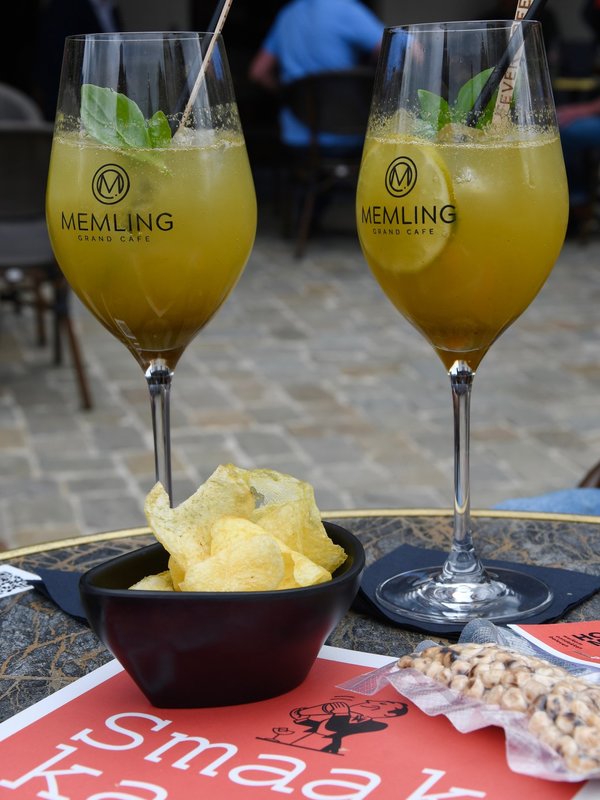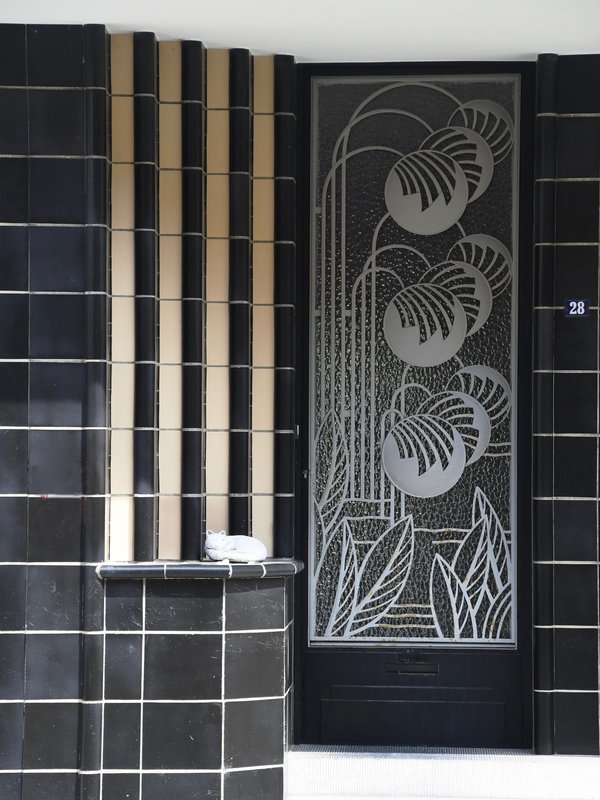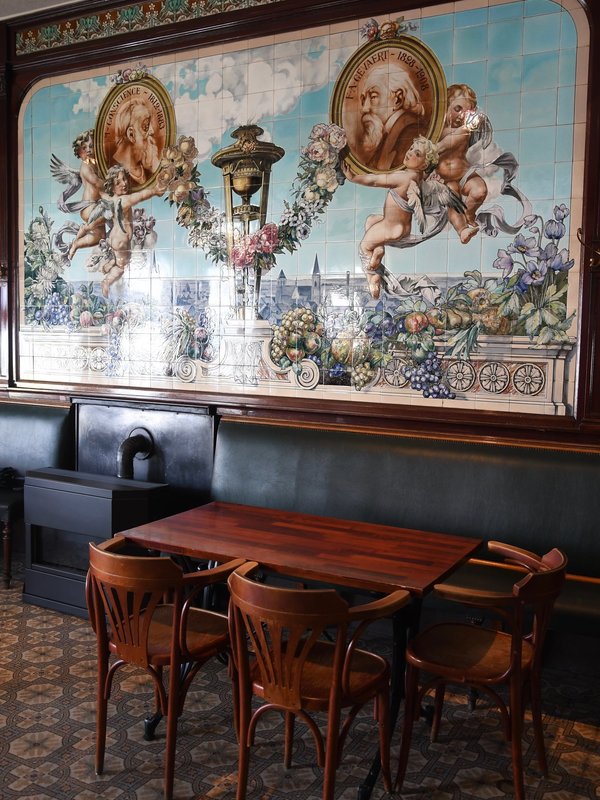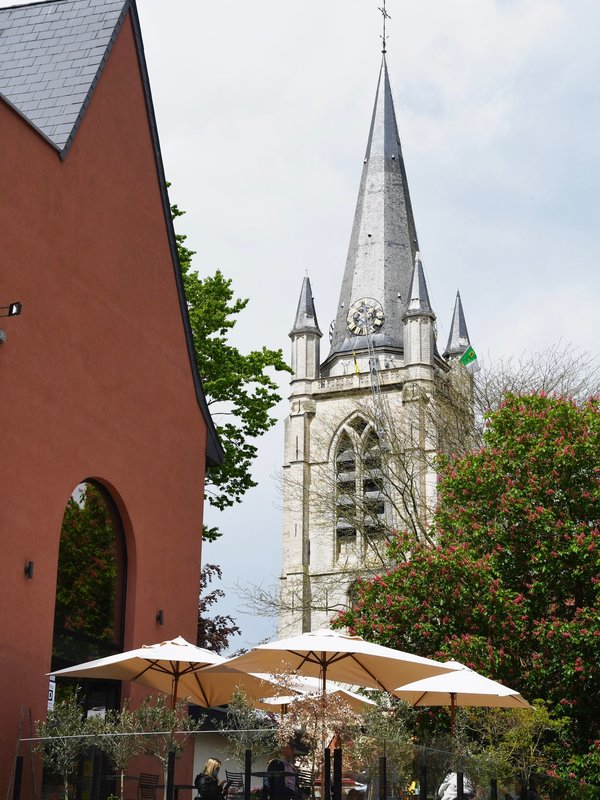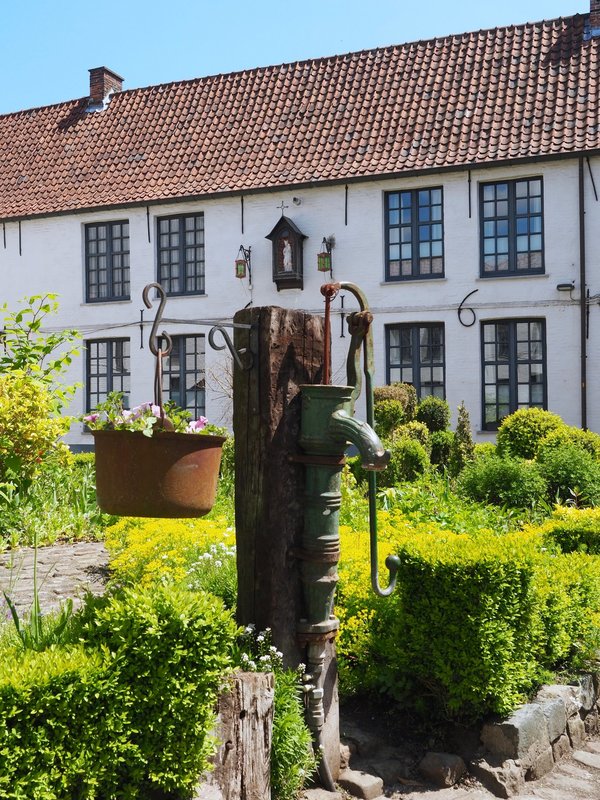Out and about in Ronse & Oudenaarde
A multi-city break with a bit of green
Singing looms in Ronse
The ‘shuttle bourgeoisie’ is what the people of Ronse called the textile barons who put the city on the map at the beginning of the 20th century. Ronse had more than 500 factories and weaving mills between the two World Wars. Their legacy can be seen in MUST, the Museum of Textiles, which houses a unique collection of historical looms near the Hoge Mote. ‘There are 40 looms, and they all still work,’ says our guide Isabelle. To reinforce her words, she plugs in three of them. We immediately realised that deafness was probably the leading occupational illness here. The lavish houses in the Amsterdam Art Deco style, which we see on nearby Mouroitplein, are also a legacy of these wealthy textile barons. They were designed by young Belgian architects who found inspiration in the Dutch capital. In this form of Art Deco, the emphasis is on creative masonry. Before we go further into town, we buy a ‘smaakkaart’ (sampling menu) in the Hoge Mote. They’re the ideal way to ‘taste’ Ronse. What could be more fun than a city walk interspersed with culinary interludes?
The fools of Ronse
A short walk takes us to St Hermes’ Basilica, where the relics of St Hermes are kept in the crypt. Romanesque-Gothic architecture blends in between 32 beautiful pillars with cabbage leaf and cubical capitals. Ronse has been a place of pilgrimage for the mentally ill since the Middle Ages. The names of all those pilgrims were carefully written down in the ‘Book of Fools’, which is still on display there. In the church, we stand before a life-size statue of St Hermes. ‘May I introduce you,’ says Isabelle, ‘to the great benefactor of madmen, who let the people of Ronse perish.’ You had to have walked at least 25 km to gain his favour – impossible for those who lived in Ronse. This is how the legendary Fiertel Procession, held every year after Whitsun, came into being. It’s a walk around Ronse or a 32.6 km hike along the city borders. ‘They don’t call us the Fools of Ronse for nothing,’ says Isabelle with a smile.
Art Deco Valhalla
From St Hermes’ Basilica, we walk to Kleine Markt, a pleasant square with a handful of cosy cafés. With our Smaakkaart in hand, we take a seat on the terrace of Café Memling. We start our culinary voyage of discovery with an aperitif of gin, lime and basil. It’s the perfect warm-up for our architecture walk, which starts at the railway station. It’s the oldest railway station on the European mainland. It was torn down in Bruges in 1879 and rebuilt here stone by stone. At Pessemiers Bridge, we cross over to the Art Deco Quarter, where the city’s most beautiful houses lean comfortably against each other. Talented architects let their creativity loose on beautiful stepped door frames, geometric glass decorations and graceful ironwork, such as the ‘Zonnedraagster’ in Leopold Sturbautstraat. An absolute masterpiece is the house in yellow brick with colourful stained-glass windows by architect Jose Vandenbossche in Saint-Sauveurstraat. Although Art Deco provides the most beautiful architectural gems, we also see other architectural styles, including Nieuwe Zakelijkheid and Neo-Baroque. All these houses have one thing in common: they were built between the two World Wars for the ‘shuttle bourgeoisie’.
City on a human scale
We satisfy our need for a snack at Eviedemment, an organic eatery in De Passage, a food temple in the converted St Martin’s Church. We swap a voucher from our Smaakkaart for healthy vegetarian tapas served with a tasty, organic regional beer. For dessert, we use our Smaakkaart to get ice cream from the artisanal chocolatier Dockers. We end the city walk in Local Unique, one of the three listed cafés in Ronse. The interior with wooden panelling, large mirrors, colourful faience tableaux and a relaxed village atmosphere catapults us back in time. We exchange our last Smaakkaart voucher for a Maarkedaal Tripel while we chat with the regulars. We are accepted immediately. The informal hospitality of the people of Ronse is one of the city’s greatest assets.
Hiking Paradise
From Ronse, we walk straight into the immense hiking paradise of the Flemish Ardennes. B&B Fiertelmeers, where we spend the night, is right on the ‘The Roof of the Flemish Ardennes’ route, a 6 km climb to the Hotondberg, the highest point of East Flanders. At the top, we enjoy a breathtaking panorama from the terrace of the restored Hotondmolen. On a clear day, you can see more than 100 church towers. Undeterred, we take the Muziekbos route, which was voted one of the most beautiful hikes in East Flanders. There is a mysterious atmosphere between the age-old beech trees. The prehistoric burial mound we come across has a lot to do with that. Holy Roman Emperor Charles V and Caesar are said to have been here. It’s even rumoured that Wagner found inspiration for his Tannhauser here. These are all rumours, of course, but it’s a fact that the name ‘Flemish Ardennes’ saw the light of day in the Muziekbos. When the poet Omer Wattez climbed the Geuzentoren, he became overwhelmed by the beauty of the hilly landscape and shouted: ‘But these are the Flemish Ardennes!’ After our efforts on the Hotondberg and the Muziekberg, we allow ourselves to be pampered in Restaurant Maison D, the best address in Ronse. In the sleek but warm interior, we enjoy some gastronomic delights.
Master weavers
Ronse had its textile barons, Oudenaarde its master weavers. Their creations can be admired in the dreamy interior of the Romanesque Cloth Hall. The unique collection of 16th century Oudenaarde verdures (tapestries with decorative foliage, lots of greenery and flowers) is striking. Oudenaarde was known for them far beyond its borders. From the Cloth Hall, we walk straight into the Town Hall in Brabantine Gothic style. In the People’s Hall, which overlooks the Grote Markt, we see imperial frescoes and solid wood panelling, but the huge fireplace impresses us most. We walk through Pauwel Vanderschelden’s magnificent portal into the Schepenzaal. Illustrious figures from the city’s past stare at us from the many paintings. Charles V, his illegitimate daughter, Margaret of Parma and Louis XIV are all present. In the attic, we admire a beautiful collection of silver items; the silversmith’s trade was a speciality of Oudenaarde.
Marathon of monuments
Of all the protagonists of the city’s history, Hanske de Krijger is the most beloved by the residents of Oudenaarde. This unfortunate tower guard slept off his hangover in his watchtower and unknowingly left Charles V standing before the locked city gates. Charles, whose royal feelings were hurt, ordered the antihero – and by extension everyone in the city – to wear glasses henceforth. But time heals all wounds. Hanske and the imperial crown now stand atop the belfry fraternally. After Ghent, Oudenaarde has the most listed buildings in Belgium. Like twin towers, the belfry (a UNESCO World Heritage Site) and the eclectic St Walburga Church tower high above the city. In the church’s shadow, we find the classical Butcher’s Hall and Margaret of Parma’s late-Gothic house with the 9th century Baudouin tower, the oldest building in the city. The feelings of other prominent figures were also hurt. The Pope for one; he felt that the ‘Zusters Bernardinnen’ who ran the Hospital of Our Lady had a few too many worldly habits, so he kicked them out of the order. The 15th-century beguinage, which the Geuzen once demolished, is a real oasis of peace. It was rebuilt in Baroque style and has lost none of its authenticity. On the right bank of the Scheldt River, we stop at the restored Maagdendale Abbey and the Our Lady of Pamele Church, by far our favourite monument in Oudenaarde. The subtle Romanesque influences, the circular walkway, the elegant corner turrets and the dim, serene atmosphere inside make it a unique piece of Scheldt Gothic. We finish our marathon of monuments on the Grote Markt, on the terrace of Café Carillon, a genuine beer pub in one of the last remaining 17th-century front-gabled houses near the St Walburga Church. The city had about 20 breweries around 1900; only a handful remain today. One of them, Roman, is the oldest family brewery in Belgium. It brews some delicious regional beers such as Adriaen Brouwer and Ename Tripel. We taste them both and toast to the health of Hanske, who looks on approvingly from a lonely height.
Benches with a plus
Like Ronse, we combine Oudenaarde with a walk through the hiking paradise of the Flemish Ardennes, which offers 850 km of junctions. In nearby Maarkedal, we try the Z+ hikes: two loops past five works of art in nature that also serve as benches. We travel through gently undulating landscapes with seas of corn, bumpy cobblestone roads with chapels and views that sometimes vaguely remind us of Tuscany. But the cypresses have been replaced by traditional Flemish pollard willows. Benches like Floris Vincke/Thijs Urban’s ‘Brick Carpet’ and Jan Detavernier’s ‘Deurnis’ are not only beautiful artistic interludes. They are also places to enjoy the landscape undisturbed. There are times when you’ll have to climb. Like on the Taaienberg, which also presents the Tour of Flanders cyclists with some serious resistance. In the evening, we’re famished. We go to Etikhove and choose a table at De Zwarte Engel, a laid-back restaurant with positive vibes, just like the rest of the Flemish Ardennes.


